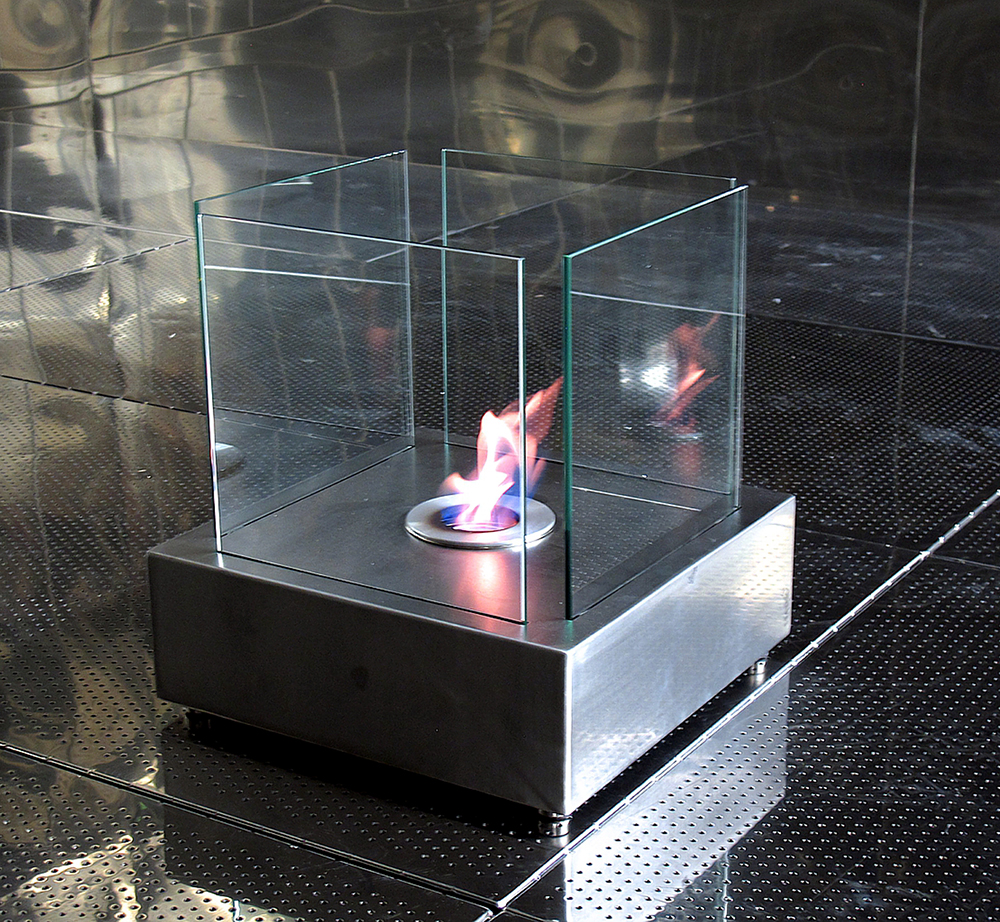Unlike wood-burning stoves, ethanol fireplaces are usually not used for heating and are purely for decorative purposes. The fuel can be a liquid or a gel. Besides the fire protection aspect, ethanol fireplaces must also be viewed critically with regard to the combustion products released into the room air. In addition to carbon dioxide (CO2) and water, a large number of other particulate and gaseous substances are produced during the combustion of ethanol, some of which are extremely harmful to health, including carbon dioxide, nitrogen dioxide (NO2) and formaldehyde, even during normal, trouble-free operation. In some cases, high concentrations of benzene, fine and ultrafine particles can also be detected. Therefore, to ensure safe indoor air quality, the use of such equipment indoors should be avoided and should only be operated outdoors.
Ethanol fireplaces
Literature
- Schripp, T., Salthammer, T., Wientzek, S., Wensing, M., 2014. Chamber studies on non-vented decorative fireplaces using liquid or gelled ethanol fuels. Environmental Science & Technology 48, 3583–3590.

